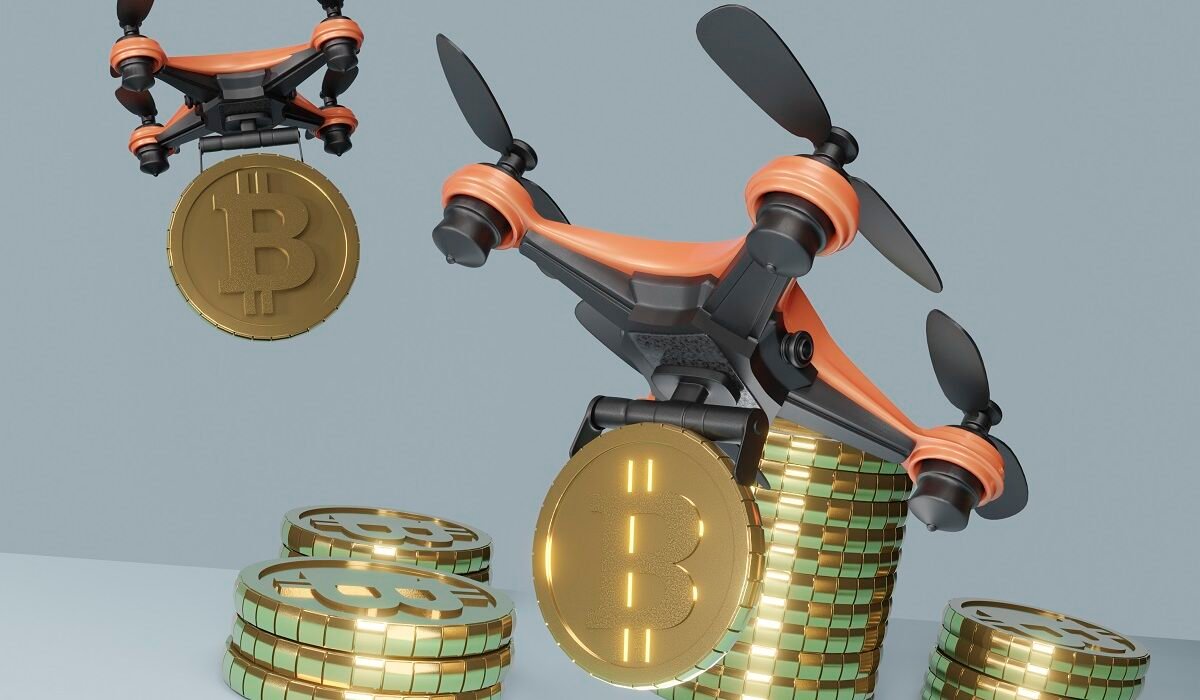Why Are Bitcoin Fees So High? Key Factors Behind Rising Transaction Costs

Introduction: Understanding Bitcoin Transaction Fees
Bitcoin transaction fees have become a significant point of discussion, especially as fees often fluctuate, sometimes reaching high levels that affect the average user. Why are Bitcoin fees so high? To understand, we need to look at the purpose of these fees and how they impact the Bitcoin network overall.
Transaction fees are part of every Bitcoin transaction and ensure that the transaction is verified and added to the blockchain. Transaction fees serve as a reward for miners who provide computational power to secure and verify these transactions. Over time, fees have evolved to manage network congestion and incentivize miners. This article examines the various factors that contribute to these high fees and discusses possible solutions.
How Bitcoin Transactions Work
The Role of Miners in Transaction Processing
Once a Bitcoin transaction is initiated, it is not immediately recorded on the blockchain. Instead, they are added to a queue called a memory pool, where miners select transactions based on their fee level, prioritizing transactions with higher fees for faster processing Why are Bitcoin fees so high?
How Transaction Data Is Recorded on the Blockchain
Each block in the blockchain has a certain size, and only a limited number of transactions can fit into a block. Miners validate these transactions, grouping them into blocks and confirming them before adding them to the public ledger.
Why Transactions Are Subject to Fees
Bitcoin’s fee structure is designed to reward miners’ efforts and manage network congestion by forcing users to pay higher fees to reduce processing time. This mechanism helps keep the network secure and efficient.
The Importance of Bitcoin Fees for Network Security
Incentivizing Miners Through Transaction Fees
Miners rely on fees to sustain their operations, as the Bitcoin supply cap is halved and rewards locked in roughly every four years. As rewards decrease, fees become even more important.
Fees as a Solution for Network Congestion
As the number of transactions increases, so does network congestion. Transaction fees help prioritize which transactions are processed first, prevent memory pool delays, and facilitate timely validation.
Security Benefits Provided by Fees
Fees contribute to Bitcoin’s security model by providing sufficient incentives for miners. Higher fees deter malicious actors from attacking the network, which increases the trustworthiness of the Bitcoin system as a whole.
Factors Influencing Bitcoin Fees
Transaction Volume and Network Activity
As more people trade, demand for block space increases and fees skyrocket. When trading volumes are high, users often compete by offering higher fees to ensure their trades are included.
Miner Fees and Reward Structures
Miners set their fee structure based on network conditions, profitability, and transaction demand. As demand increases, miners may increase their preferred fees.
The Impact of Blockchain Block Size Limits
Bitcoin’s block size limit is a major factor in increasing fees. Block size limits the number of transactions per block, creating a supply and demand scenario that naturally increases fees during peak periods.

How Network Congestion Impacts Bitcoin Fees
High Demand and Limited Space
With only 1 MB of block space available every 10 minutes, transaction space is limited. This often creates congestion and competition between users.
How Congestion Leads to Fee Bidding
During peak times, users often bid higher rates to prioritize operations, and when demand outstrips supply, rates increase even further.
Real-World Examples of Fee Spikes During Peak Times
During periods of high market activity, such as during significant price increases, fee spikes are recorded, resulting in extremely high trading fees.
The Role of Block Size in Bitcoin Fees
The Fixed Block Size Constraint
Why are Bitcoin fees so high? Bitcoin’s block size is fixed at 1 MB, which limits the number of transactions that can be processed in each block. This limit directly affects transaction fees during periods of high demand.
Debate Around Block Size and Scalability
Some have suggested increasing the block size to reduce fees, while others argue that scaling solutions like the Lightning Network is a better way to meet high demand without changing Bitcoin’s core protocol.
How Block Size Impacts the Fee Economy
When block sizes are limited, a fee market is created where users compete to have their transactions included. This structure often results in higher fees, especially when network activity increases.
The Rise of High-Frequency Transactions and Bitcoin Fees
The Increase in Transaction Frequency
As Bitcoin gains popularity, transaction volumes also increase, putting a strain on network capacity and increasing fees.
Why More Transactions Mean Higher Fees
As more people use Bitcoin for everyday transactions, the demand for space on the blockchain increases, leading to higher fees.
Trends in Transaction Frequency Affecting Fees
The trend of using Bitcoin for different types of transactions is increasing network congestion and fees.

The Impact of Institutional and Retail Demand on Bitcoin Fees
Institutional Interest and Network Pressure
Institutional adoption has increased transaction volumes, congestion and fees as institutions are willing to pay premium fees for instant processing.
Retail Transactions and Fee Competition
Retail users buying and selling goods also compete in the same network space, and their demands for faster processing further increase transaction fees.
Demand Factors Driving Fee Increases
The combination of demand from both the retail and institutional sectors has led to increased competition for limited block space and frequent fee increases.
Alternative Fee Models in Bitcoin’s Future
Proposed Changes to Fee Structures
Some have suggested alternatives to Bitcoin’s current fee model, such as dynamic fees or other adaptive models, to better balance network demand and affordability.
Layer 2 Solutions Like the Lightning Network
Lightning Network is a promising solution that enables off-chain transactions, significantly reducing fees and Why are Bitcoin fees so high?
Future-Proofing Bitcoin’s Fee Model
By implementing Layer 2 solutions and other innovations ,Why are Bitcoin fees so high? Bitcoin will be able to accommodate large transaction volumes without paying high fees.
How Users Can Lower Their Bitcoin Transaction Fees
Tips for Optimizing Transaction Timing
Sending transactions during off-peak hours can reduce fees because there is less competition for space on the blockchain.
How Transaction Batching Reduces Costs
Transaction batching, which processes multiple transactions as one, saves fees and reduces congestion.
Choosing Fee Levels Based on Network Conditions
Wallets that allow users to set custom fees based on network conditions can help you strike a balance between speed and profitability.
Bitcoin Fee Comparison with Other Cryptocurrencies

Fee Models in Alternative Cryptocurrencies
Many cryptocurrencies have unique fee structures that affect transaction costs differently than Bitcoin. For example, Ethereum charges fees based on computational power through “gas,” while Litecoin keeps fees low by processing transactions faster due to short block times. These fee models provide insight into potential alternatives to Bitcoin’s transaction structure.
Why Bitcoin Fees Are Unique
Bitcoin’s fee structure remains unique due to its fixed block size and design that prioritizes security and decentralization. There are alternatives, but Bitcoin’s popularity and emphasis on robustness mean that fees are high, Why are Bitcoin fees so high? especially when the network is congested.
Comparing Bitcoin Fees to Ethereum and Others
Ethereum fees, like Bitcoin, are often high, especially during peak usage. However, Ethereum layer-2 solutions, such as Rollup, are gaining ground to alleviate this. Comparing Bitcoin to others highlights the potential benefits of adopting a layer-2 solution to manage high fees without changing the core structure of the blockchain.
Conclusion: What’s Next for Bitcoin Transaction Fees?
Bitcoin fees are a complex topic that is influenced by a variety of factors, including miner incentives, network congestion, block size limits, Why are Bitcoin fees so high? and transaction demand. Although high fees are often considered a barrier to Bitcoin adoption, they play an important role in keeping the network secure and incentivizing miners.
New solutions like the Lightning Network and ongoing software updates are promising steps toward reducing transaction fees without compromising Bitcoin’s core principles. As Bitcoin continues to grow, the challenge will be to balance security and scalability, while maintaining both accessibility and resilience.
For More interesting content Visit Fewwires.










